1. Peel-and-stick backsplash tiles
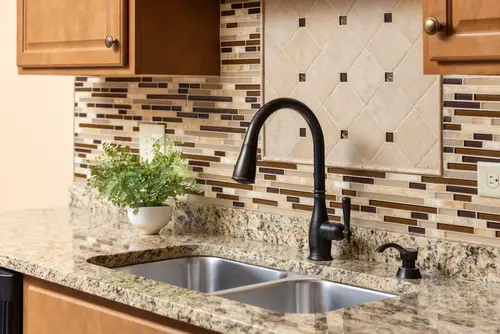
Peel-and-stick backsplash tiles might seem like an easy shortcut, but they rarely hold up over time. Heat, moisture, and cleaning can cause the adhesive to loosen, leaving corners curling or tiles slipping out of place. They also tend to look flat compared to the depth and finish of real tile. What starts as a “quick fix” can quickly become a mess.
Even when they stay put, the glossy finish often gives away that they’re not genuine ceramic or stone. The seams can be noticeable, especially under good lighting. In a room like the kitchen, where durability matters, these tiles usually don’t pass the test. A proper backsplash installation costs more, but it lasts much longer and looks far more polished.
2. Over-the-range microwaves as a statement piece
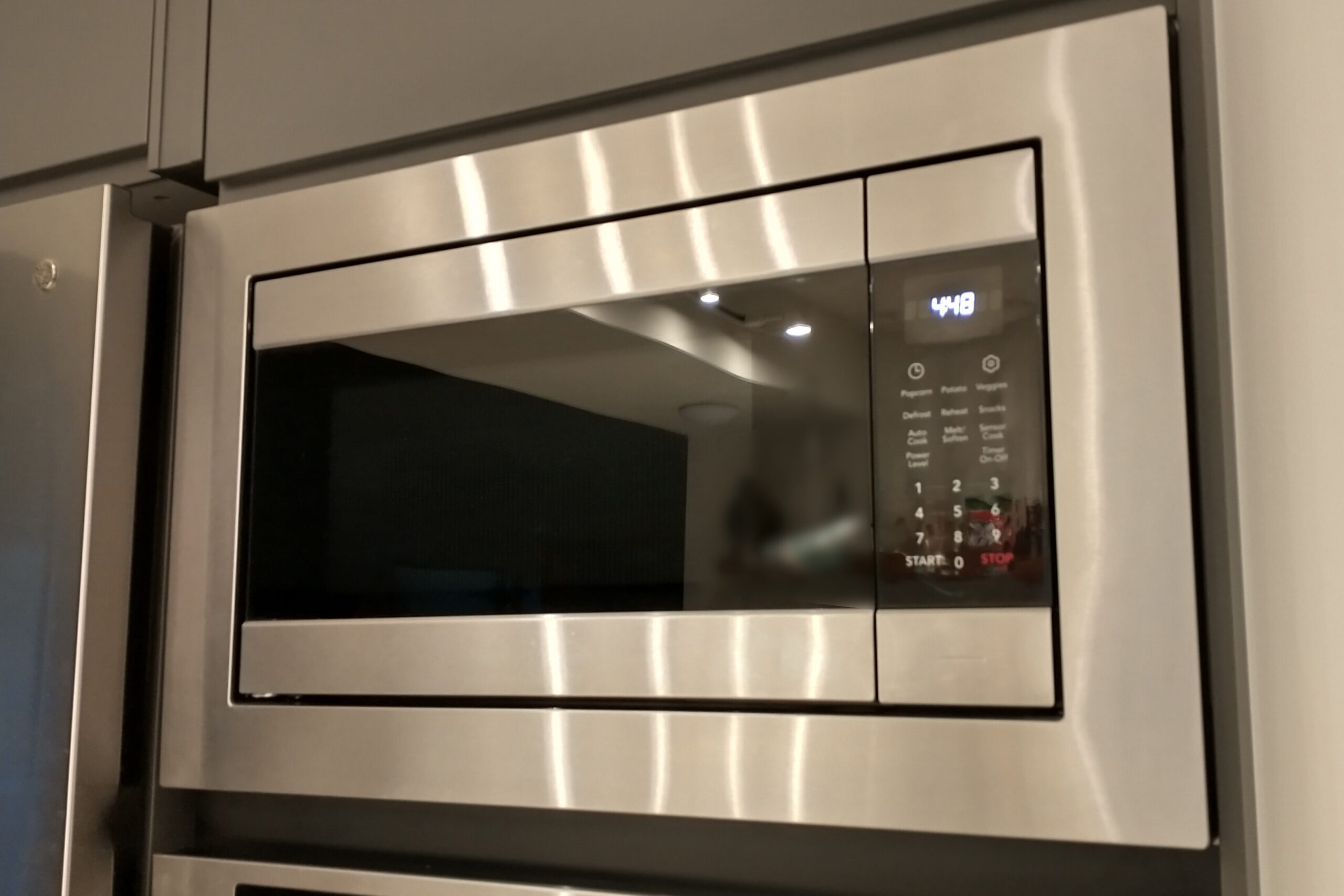
Installing a microwave over the stove might feel like a space-saver, but it usually dates a kitchen. While convenient, it doesn’t provide the upscale look many people are aiming for. Higher-end kitchens often hide microwaves in a cabinet or use drawer-style versions for a seamless appearance. Putting one front-and-center makes the room feel builder-basic.
Another issue is ventilation. Most over-the-range microwaves have weak exhaust systems compared to proper range hoods. That means lingering cooking smells and grease can build up over time. Functionally and aesthetically, they’re not the upgrade people think they are.
3. Faux granite or marble laminate countertops
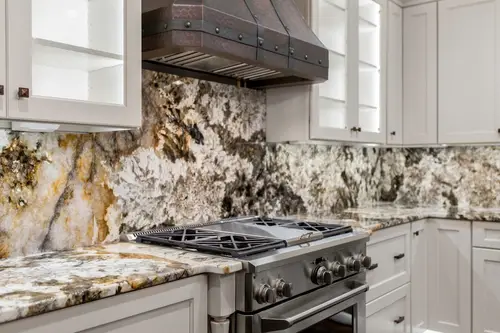
Laminate countertops printed to look like granite or marble often miss the mark. The patterns rarely mimic the natural depth or veining of real stone. Under harsh lighting, the repeat in the design can make them look like a photograph instead of the real thing. Instead of elevating a kitchen, they can make it feel dated.
Durability is also an issue. Laminate scratches, chips, and peels far more easily than real stone or quartz. Even with edge treatments meant to look like stone slabs, the difference is obvious. Many homeowners end up replacing laminate long before they would a true stone surface.
4. Cheap cabinet refacing with vinyl wraps
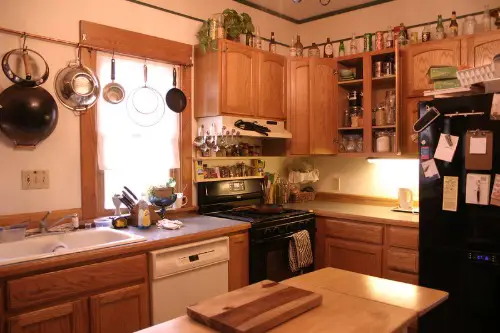
Vinyl cabinet wraps might seem like an affordable facelift, but they rarely hold up well. Heat from the stove or steam from the dishwasher can cause bubbling and peeling. Once the adhesive weakens, corners start to lift and the cabinets look worse than before. Instead of a sleek transformation, it often feels like a temporary bandage.
The texture is another giveaway. Vinyl doesn’t have the same richness or grain pattern as real wood. Even if the color looks modern, the flat finish gives away the shortcut. A better option is painting or replacing doors for a more lasting upgrade.
5. Overly trendy cabinet hardware
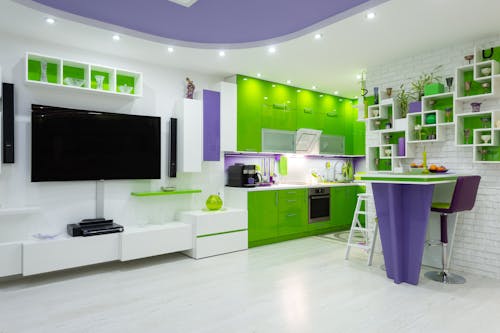
Gold, rose gold, or matte black cabinet pulls can look stylish at first, but cheap versions wear down quickly. The finish often flakes or scratches with everyday use, exposing the metal underneath. What seemed like a chic choice suddenly looks cheap and worn. Hardware is something people touch daily, so poor quality shows fast.
Another problem is trend lifespan. Hardware finishes cycle in and out of fashion quickly. A kitchen filled with yesterday’s trendy knobs can date the whole space. Timeless materials like brushed nickel or stainless steel age more gracefully.
6. Excessive open shelving
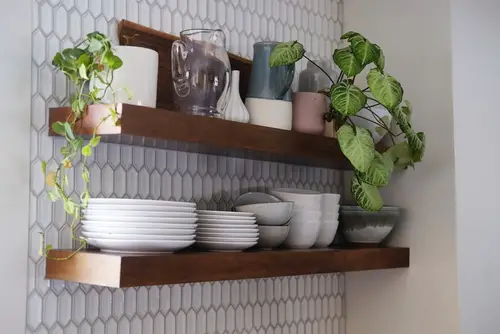
A little open shelving can be charming, but too much makes a kitchen look cluttered. Unless you have perfectly curated dishes, it often feels messy rather than intentional. Dust and grease from cooking also collect quickly, making upkeep a chore. Instead of looking airy, it can look unfinished.
Overuse also signals cost-cutting. Open shelving is far cheaper than proper cabinetry, so when it dominates a space, it can make the kitchen feel budget-driven. Without balance, the design can lose warmth and functionality. Closed cabinets help ground the space and keep things feeling intentional.
7. Builder-grade light fixtures
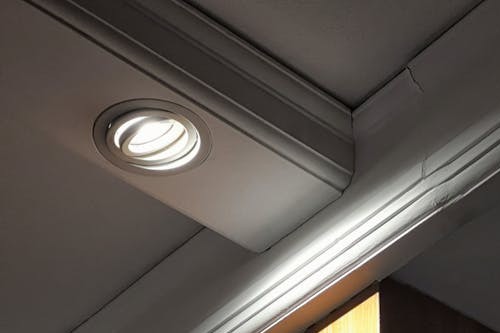
Those dome-shaped flush mounts or cheap pendants might keep costs down, but they drag down the look of a kitchen. Lighting plays a big role in design, and uninspired fixtures scream “basic.” They don’t add personality or style, which can make the whole space feel flat. It’s one of the easiest things to spot as a downgrade.
Cheap materials also don’t age well. Finishes can tarnish, and plastic diffusers yellow over time. A more intentional fixture, even if simple, instantly elevates the room. Lighting doesn’t need to be expensive, but it should feel considered.
8. Faux brick or stone panels

Plastic or foam panels that mimic brick or stone almost always look fake. The texture is too uniform, and the seams between panels are easy to spot. Real brick or stone has irregularities that these replicas can’t replicate. Instead of rustic charm, it often feels like a stage set.
These panels also aren’t built for heavy kitchen use. Grease splatter, cleaning, and heat can wear them down quickly. Once they start peeling or cracking, the cheapness is undeniable. If you want that look, a thin veneer of real stone is a smarter long-term investment.
9. Ornate corbels and trim add-ons
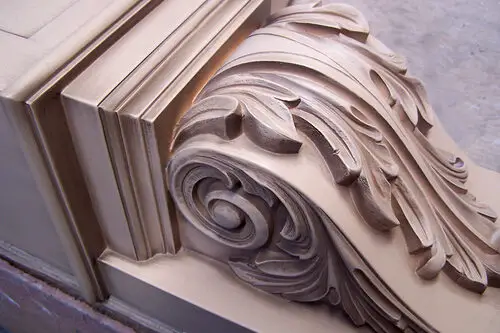
Overly decorative trim or corbels under countertops can feel like an upgrade, but they often cheapen the look. Mass-produced versions are usually made from lightweight materials that look fake up close. Instead of timeless detail, they give off a “trying too hard” vibe. Kitchens today lean toward cleaner lines, so heavy ornamentation can age a space fast.
These elements also collect dust and grime. Around the cooking area, detailed trim can be tough to keep clean. What seems like an elegant touch quickly becomes a maintenance headache. Less really is more in most modern kitchens.
10. Stainless steel stick-on covers for appliances
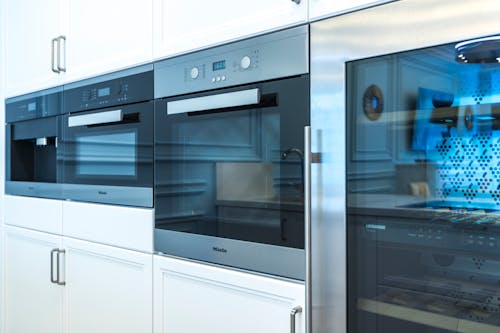
Magnetic or adhesive stainless covers for white appliances promise a sleek look, but rarely deliver. The finish never perfectly matches true stainless, and seams around edges are obvious. Up close, it’s clear the appliance isn’t what it appears to be. Instead of disguising an older appliance, it draws attention to it.
Durability is also a problem. These covers scratch easily and can peel after a few cleanings. They don’t actually upgrade functionality or resale value. If stainless is the goal, replacing the appliance is the only real fix.
11. Fake farmhouse sinks
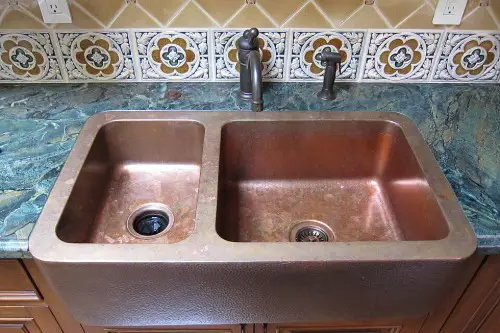
Drop-in “faux” farmhouse sinks that mimic the apron-front look without actually being one often fall short. The illusion is usually obvious because the proportions don’t line up with real farmhouse designs. Instead of feeling charming and rustic, they can look forced. It’s a case where a shortcut doesn’t sell the aesthetic.
Real farmhouse sinks are made from materials like fireclay or cast iron, which have weight and durability. Fake versions often use lightweight composites that scratch or stain easily. The difference is clear when you actually use them. It’s better to wait and save for the real thing.
12. Overdone crown molding on cabinets
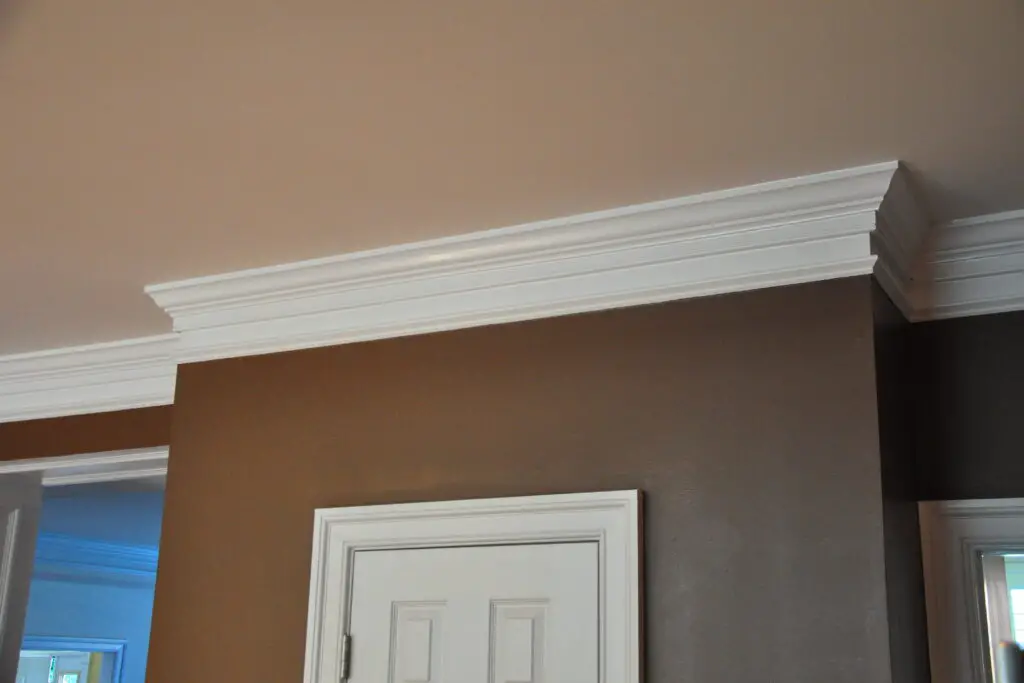
A touch of crown molding can finish cabinetry nicely, but going overboard makes it look dated. When the trim is too large or ornate, it can overwhelm the space. Kitchens benefit from clean lines, and excessive molding interrupts that flow. Instead of feeling custom, it can feel like filler.
Another problem is proportion. If the cabinets aren’t tall enough to justify big molding, it creates awkward spacing with the ceiling. The result is more “stuck on” than “built in.” Minimal, well-scaled trim usually looks far more polished.
This post 12 Kitchen “Upgrades” That Look Cheap in Reality was first published on Greenhouse Black.
